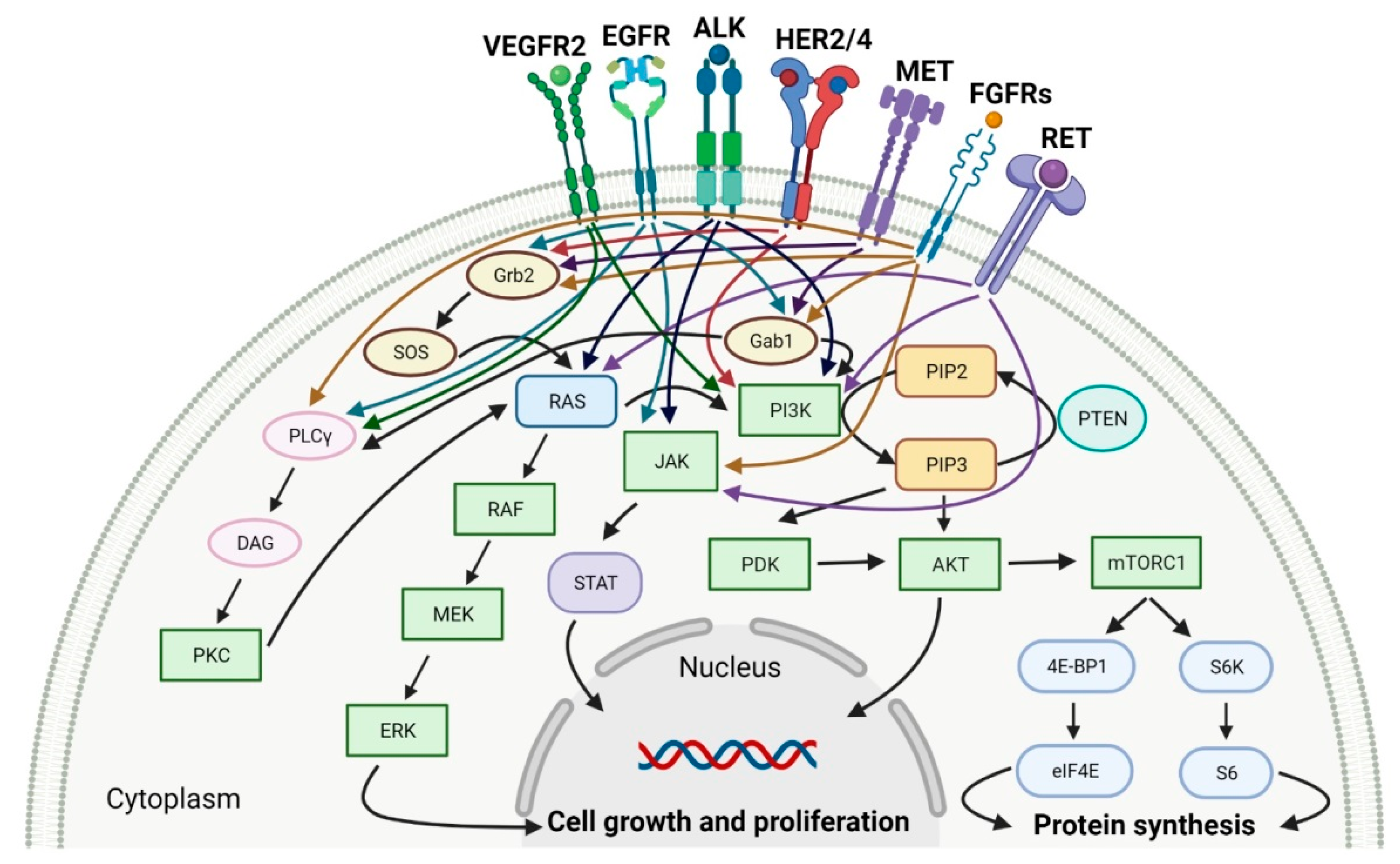Mechanism of action of kinase inhibitors This figure shows a schema of Biology Diagrams Anti-mitotic therapies in cancer J Cell Biol. 2019 Jan 7;218(1) :10-11. doi Aurora Kinase B / antagonists & inhibitors Aurora Kinase B / genetics Aurora Kinase B / metabolism Neoplasms / drug therapy* Neoplasms / genetics Neoplasms / metabolism This was accomplished by combining CDK4/6i with additional CIN-inducing agents, including a bromodomain and extraterminal repeat (BET) inhibitor and mitotic kinase inhibitors. As the inhibition of many mitotic kinases is highly toxic, we identified Nima-related kinase 2 (NEK2) as a potential therapeutic target that could be combined with CDK4/6i. In prostate cancers, the abundance of the tumor suppressor PDCD4 is inversely correlated with response to the antiandrogen (also known as an androgen receptor inhibitor) enzalutamide. Zhang et al. found that PDCD4 is repressed by the mitotic kinase PLK1, which enabled the activity of cell survival pathways that are androgen independent. In

Kinase and BET inhibitors together clamp inhibition of PI3K signaling and overcome resistance to therapy Cancer Cell , 27 ( 2015 ) , pp. 837 - 851 , 10.1016/j.ccell.2015.05.006 View PDF View article View in Scopus Google Scholar Protein kinases are crucial targets for cancer treatment as they orchestrate important signals for oncogenesis and are often aberrantly activated owing to genomic alterations. In the past two Mitosis checkpoint kinase (CHK) inhibitors (including LY2603618) These agents act on the mitotic process, a proven target for anti-neoplastic therapy. It will be important for the development of these agents to evaluate the potential advantages over available mitotic inhibitors. It is likely that patient selection will hold a key to

Why Great Mitotic Inhibitors Make Poor Cancer Drugs Biology Diagrams
Targeting the mitotic checkpoint for cancer therapy with NMS-P715, an inhibitor of MPS1 kinase. Cancer Res 2010; 70 : 10255-10264. Article CAS PubMed Google Scholar MNK activity is regulated by the p38 and Erk MAPK pathways. Phosphorylation of MNK leads to its activation and binding to the eIF4G/eIF4E complex. MNK then phosphorylates eIF4E at Ser209, whose activation is associated with oncogene translation, leading to tumorigenesis. Given this important role for eIF4E in tumorigenesis, MNK inhibition with novel small molecule inhibitors could be a
